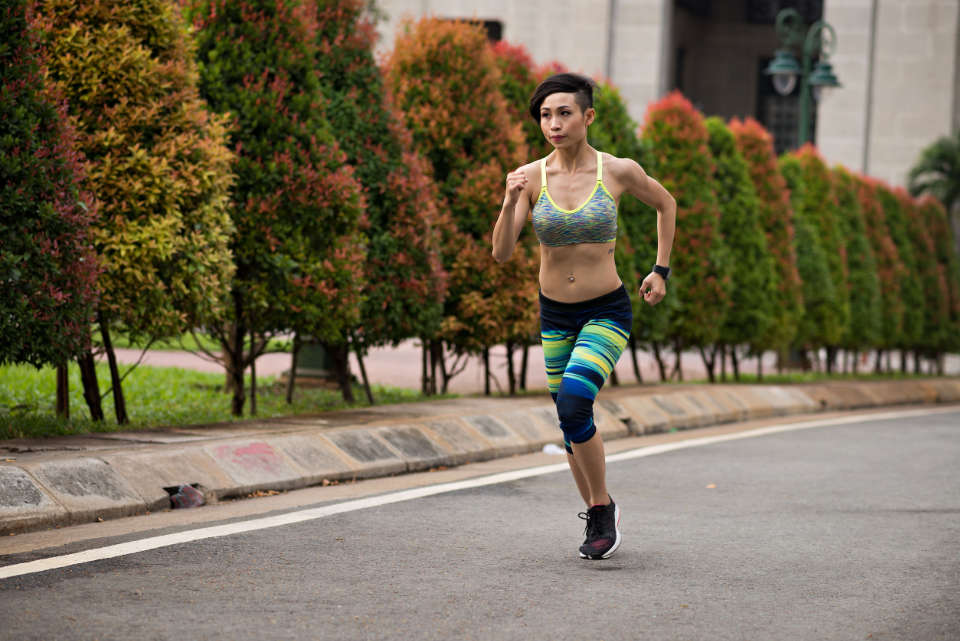Do you dream of training for a marathon one day? If so, you should know that it’s not just a matter of running a little more each time until you hit 42 kilometres. You need the right information to understand how to train safely so that you can fully enjoy the adrenaline rush you’ll feel when you’re finally ready to tackle that marathon.
Here’s a guide to everything you need to know about training for a marathon, starting with the basics of running, how to run a five-kilometre race, how to run a 10-kilometre race, how to run a half marathon and finally, how to train for your first marathon.
What are running techniques?
Any methods of adapting your running posture, the way you adapt your running speeds and your training schedule are all part of your running technique.
These tricks of the trade help you advance more quickly from a recreational runner to a potential marathon champion, and recent sources like the book “Chi Running” by Danny Dreyer and CrossFit Endurance training programs coached by Brian MacKenzie all strongly emphasise the advantages of good running technique.
Why are running techniques important?
Using proper running techniques will help you run longer, run faster and train more quickly without feeling like giving up too soon. Best of all, proper running methods help you prevent injuries while running too.
We quoted Dr. George Sheehan:
“If your morning pulse rate is up 10 or more beats above your average, then you haven’t recovered from the previous day’s training. Take time off or back off until it returns to normal.” The right training schedule will work with your body, not against it.

What common mistakes do runners make in their techniques?
First of all, don’t wear the wrong shoes! Don’t buy some cheap pair of tennis shoes that are tight around your feet, or you’ll regret it. Ted Corbitt, a runner in the 1952 Olympic marathon, explains:
“Buy all shoes, both street and running, slightly longer and wider than your bigger foot. Also, avoid pointed shoes. You’ll save yourself needless foot pain. You should also never tense your hands, or any other upper parts of your body, while running because it wastes precious energy. Don’t clench your fists in a white-knuckle grip. Instead, run with a cupped hand, thumbs resting on the fingers, as if you were protecting an egg in each palm.”

Slow Cadence
Running speed is the result of the streak distance multiplied by the streak speed. That said, most runners will first try to increase their stride length, which in turn reduces their stride frequency, which should be about 180 feet per minute under optimum conditions.
The easiest way to count the streak frequency is to count your steps for 15 seconds and multiply by 4. If you count 40 steps in 15 seconds of running–meaning that you are currently taking 160 foot strikes per minute–progressively jump to 180 foot strikes per minute by focusing on increasing your turnover.
Lack Of Mobility
Stride frequency and stride length are the two components that determine running speed. Mobility trumps everything else when it comes to running fast and staying healthy. If you do not have a full range of motion anywhere in your lower body, you will be more susceptible to injury.
A good way to increase running-specific flexibility is through Effective Isolated Stretching, a technique popularised by Phil Wharton stretching guru. His focused on how to lengthen the muscles properly in order to prevent injury and improve performance.
Now, let’s take a look at the momentum. One of the easiest ways to bring in momentum is to bank from the knees. This forward lean will also help you avoid uphill miles racing. Keep your head as straight as you can, and stop bouncing up and down as you drive yourself forward.
Identify correct vs. incorrect running techniques
Mike Antoniades, a running coach featured on BBC Sport, describes several key points about potentially harmful running styles.
- Don’t put excessive bounce into strides that are too big for you.
- Avoid pounding your feet down hard on the pavement; it won’t help you run faster, and it could hurt your joints!
- Don’t stiffen your arms in any way.
He explains that correct running postures should always assist your gait by:
- Swinging your arms to create more leverage that helps give you forward momentum.
- Focusing on the ball of your foot touching the ground with toes pointed down a bit so that you’re not smacking a flat foot down each time.
- Visualising your feet scraping just along the surface of the pavement.
Mayo Clinic Sports Medicine elaborates correct running form further by describing:
- Keep your chest lifted up so that your lungs have more room to breathe while running.
- Avoid rotating your torso because it creates bad alignments and makes running longer distances more difficult.
- Don’t land each stride with all your weight on your heels because it’s likely to cause an ankle injury.
- Direct your knees more forward and less up while running to increase your endurance.
Should you mimic others’ techniques or develop your own?
Founder of RunnersConnect and marathon trainer Jeff Gaudette explains:
“There is no absolute ‘perfect’ running style you can copy … improving your running technique isn’t about mimicking another runner’s form. The ‘perfect’ form for you is one that allows you to train injury-free month after month, year after year.”
He goes on to stress that you need to examine your entire running posture as a whole. If you must do it alone without a personal coach, then film yourself running. You can compare your posture and running gait to the principles shown in this video.
Learn how to train for a 5-kilometre run:
For beginners, you need to know that warm-up routine is the most vital part in your training. A good warm-up includes dynamic stretching to get the blood flowing. As for the post-run, you can do some static stretching.
Dynamic stretching can be walking lunges, butt kicks, high knees and toy soldiers—straight-leg kicks that stretch the hamstrings. This will increase your flexibility and prevent from getting any injuries by strengthening your muscles and joints.
After that, go for a brisk walk for five minutes, then slowly speed up to a comfortable jogging or running pace.
On Beginners Running Information, experts advise four weeks of training.
In the first week, attempt to run for 30 minutes on the first day. Then rest and stretch the second day. On the third day, try running for 30 minutes again. The fourth day should only include a fast walk for half an hour after warming up. Then on the fifth day, try running for 30 minutes once more. The sixth day is only for strength training, and you should enjoy total rest on the seventh day!
On each consecutive week, repeat the same pattern of alternating running days with milder exercise days while gradually increasing your strength training and adding sprints during your runs.
Here’s how to train for a 10-kilometre run:
Coach Jenny Hadfield, explains how progressing from the five-kilometre run to the 10-kilometre race requires you to be even more consistent in your training schedule. Even if you’re having a really bad run and feel dead tired, push yourself to just slow down the pace and make yourself finish the gradually increasing distance at all costs.
Once a week, practice adding sprints. You can do it smoothly by warming up with a five-minute walk. Follow it with a 10-minute jog at your easy pace. Next, start running four sets of two-minute intervals very quickly, following each one with two minutes of a light jog to recover.
When you’re ready to cool down, then run at a lighter pace for 10 minutes before ending with a walk for five minutes. By using this routine once weekly for three consecutive weeks, you’ll become ready to add more sprints!

Here’s how to train for a 21-kilometre run or half marathon:
Certified running coach Thad McLaurin describes how your experience will determine your training schedule. For your first half marathon, it’s enough to run just four times weekly.
Twice you should do a faster run with sprints, and twice weekly you should do an easier maintenance run. Start runs with a one-mile warm up and one-mile cool down. Run a little slower than your five-kilometre pace.
Strength training is equally essential in a half marathon training plan. It can boost to your muscles and joints as it help strengthen your muscles. Also, it can improve your race time and prevent you from getting any injury. If you get confused or lost on what or how you should do. Search up a bunch of videos in YouTube or read article that provide accurate tips and tricks. Some strength training workouts can be done at home.
Learn how to conquer a 42-kilometre run or train for a full marathon:
Coach Stephanie Bruce with personal experience in the Olympics revealed that running 50 to 80 kilometres weekly is the absolute minimum that the average person should train before doing your first marathon.
However, a professional who can recover well may train up to 225 kilometres weekly because they’re aiming for higher speeds and are less prone to injuries.
She adds that,
“The idea in running mileage during training and working out on tired legs is what simulates that last 10 kilometres of the marathon. A half-marathon tempo run in the middle of your high-mileage week will feel like the last couple kilometres of the race.”
Now that you’ve heard from the experts, tell us: Have you had any different experiences that helped you run better other than these tips? Some runners have often felt that running long distances is simply a talent you’re either born with or not.
Do you feel anyone can train for a marathon, or do you think it really depends on your personal body type and disposition? Share your thoughts with us in the comments.





